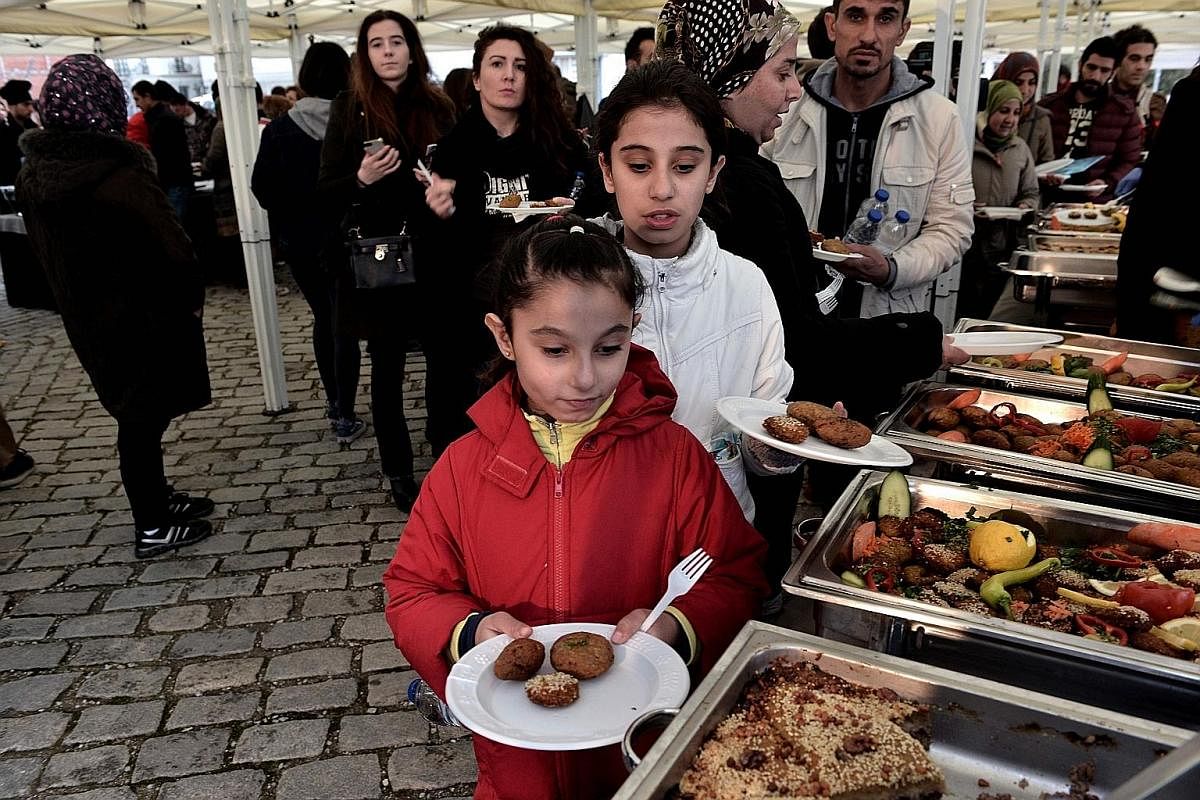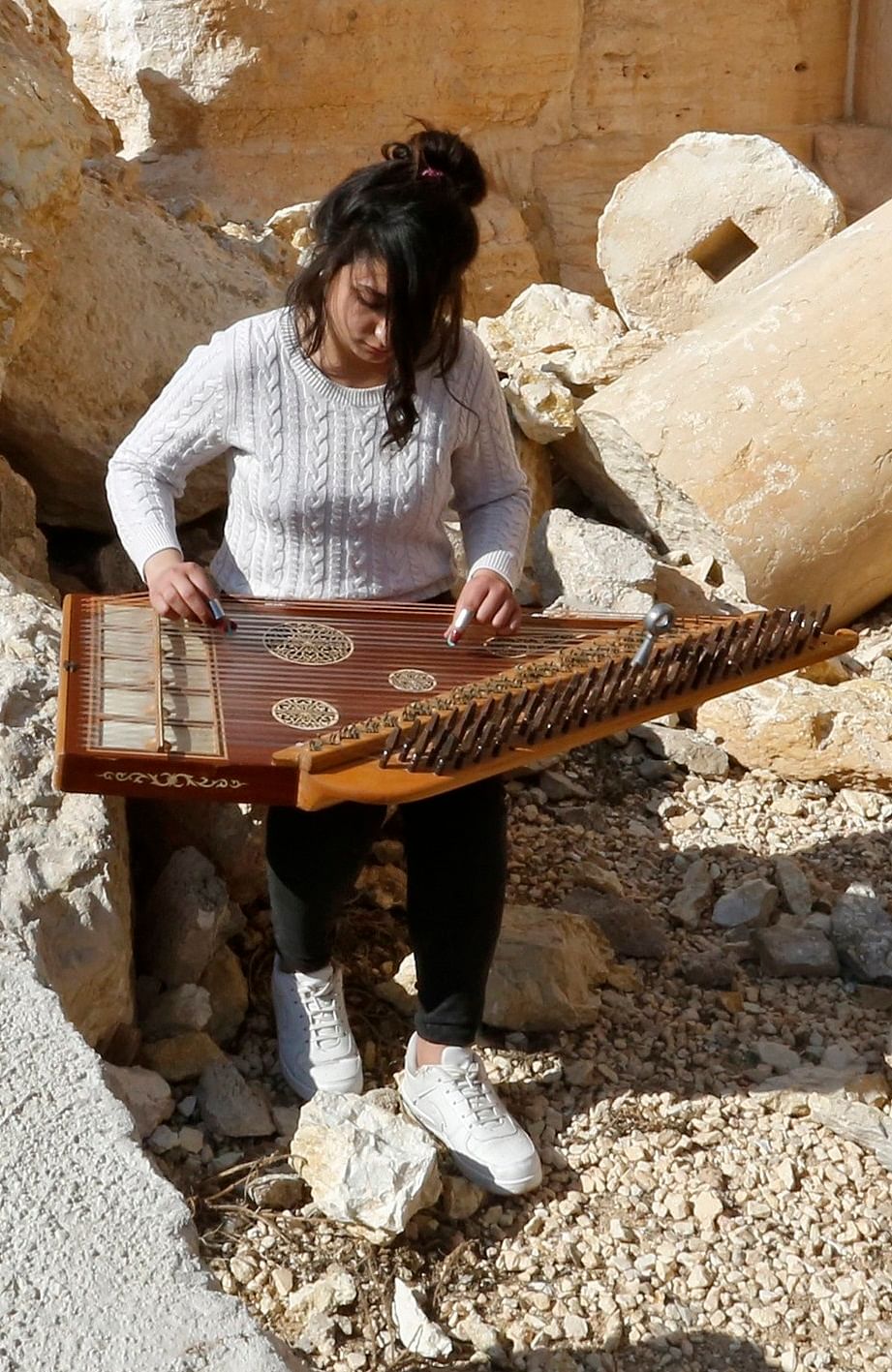In a refugee's bags, memories of home
The cultures of Iraq and Syria have been torn apart by war. But displaced residents preserve bits of home in their clothing, music and food.

Seeds and saplings, musical instruments, elderly parents leaving home for the first time. Telephones containing recordings of voices, festivals, pictures of the missing and the dead. Recipes for eggplant stuffed with hot peppers. A nursery rhyme sung in a dying language.
These are just some of what Syrian and Iraqi refugees and migrants take with them as they travel across borders and into new lives.
In September, when I set out on what will be a two-year project to tell the stories of disappearing cultural heritage in the Middle East, I found myself struggling to grasp the magnitude of upheaval because of war: countless lives lost and upended, archaeological sites destroyed, soap factories bombed, textile weavers and artisans in exile, religious communities and ancient languages vanishing. I hoped that by speaking to some of the millions of displaced people, I might begin to understand what had been lost.
As I've begun meeting migrants and refugees from Iraq and Syria, in churches and border towns, subway stations and restaurants, in the Middle East and European villages, the stories they tell reveal not only what they have lost, but also the beautiful things they have saved, or remade.
I learnt in Jordan that a city can be sewn into a dress. In a cramped apartment on the outskirts of Amman last fall, I met Ms Hana Slewa Mosaky. She, along with nearly all of the Christian inhabitants of the northern Iraqi city of Qaraqosh, had fled on the night of Aug 6, 2014, as the Islamic State in Iraq and Syria seized control. Two years later, with no hope that the political situation there would stabilise, she was waiting with her family for visas to be resettled in Australia.
As family members huddled around the television, watching images of burnt buildings in Qaraqosh, Ms Mosaky brought out a folkloric wraparound dress she had recently sewn. Over four months, she had embroidered Qaraqosh's heritage against a bold background of red-and-black checked fabric: images of the church of St. Mary al-Tahira and the nearby monastery of Mar Behnam, the city's agricultural fields, the traditional wedding dance. In one corner was her name in Arabic. In the other, "Bakhdida", the name of Qaraqosh in her native Syriac language.

"When I knew that we were going to travel, I thought that it was one last memory that I could take with me," she said. Both the church and the monastery featured on her dress have been ransacked.
I met Mr Naseer Alhamdani, also from Qaraqosh, in a church lobby in Amman. Once a professional singer in Iraq, he, too, had lost hope of returning home. He sang a haunting melody for me in Syriac, a dialect of Aramaic spoken in northern Iraq now in danger of extinction. For Christians from Qaraqosh, it was perhaps their greatest heritage - a dialect of the language probably spoken by Jesus.
They had fled their homes in the middle of the night, with no time to pack, but their language was something they could bring with them. "We can't leave the Syriac language behind," his wife, Rana, said. "We'll have to continue to speak it to our children."
In Ramtha, a city on the Jordanian border with Syria, I came upon small, purple eggplants and red peppers in the market, and learnt that refugees fleeing the city of Daraa in Syria had crossed the border carrying seeds to plant in exile. The eggplants and peppers in Jordan didn't taste the same, and small eggplants were necessary in making "makdous" - the stuffed eggplant dish beloved in Daraa.
Ms Majeda Jabali, a refugee from Damascus, opened a Syrian restaurant with her sister outside of Paris, serving regional specialities like kibbe, ground meat cooked in a shell of bulgur.
She covered the restaurant tables with the famous Damascus aghabani tablecloths and hung window frames on the wall with views of the Syrian countryside pasted inside. When her brother-in-law recently travelled from Syria, she asked him to bring a jasmine sapling, noting that the jasmine in France doesn't smell the same.
For her, cooking food was a way of holding onto the large communal meals they had shared in Damascus. "Here, even when my husband goes out, he'll come back with an entire crate of oranges or apples. I'll say to him, 'What are you doing? We're only two people!' But this is who we are."
What refugees carried with them, tangible and intangible, taught me not only about the places they left behind, but also about the people they had been in those places, before war took over.
Mouiad, a Muslim refugee from Daraa living in Irbid, Jordan, spoke of the easy relationships he'd shared with his Christian friends before the sectarianism of the war took over. "During Ramadan, sometimes the Christians wouldn't eat - they wouldn't smoke in front of us out of respect for us," he told me.
"I would say, 'Smoke, my friend!' But they would refuse." When Christians fasted in preparation for Easter, on some days he would also choose to fast with them as a gesture.
Though he had left most of his belongings in Syria and his apartment in Jordan was spare, he wanted to show me one thing he kept with him. Though a devout Muslim, he had an Arabic copy of the New Testament on his shelf.
Mr Mohanad Aljaramani, a professional oud player and percussionist from Sweida in Syria now living in Paris, brought his music with him, noting that his small region in Syria had been the homeland of Farid al-Atrash, the "King of the Oud".
When Mr Aljaramani's 70-year old mother visited from Syria a few years ago, she asked what she could bring with her. He and his brother Khaled, also a musician, requested that she carry a qanun, a trapezoidal wooden stringed instrument made by the master instrument maker Ibrahim Sukar, whose workshop had been reportedly destroyed in the war.
"Perhaps one of our children will play it one day," he said.
Migrants and refugees have no common story. Some travel intentionally, by boat, in the back of trucks, by plane if possible. Others leave home for what they thought would be only a week or two, but are likely never to return. Some are waiting to return home, others have given up hope of ever going back and are simply trying to move forward. One spoke with fear of the Palestinian experience and the possibility that their exile might extend for generations.
The cellphone is the one device that they seem to share in common. This is how they receive news of the world they left behind. But it is also where they keep their photo albums, filled with images of birthdays before the war, families now scattered, houses now abandoned, brothers now missing.
Dr Samer Tarabichi, a painter and doctor from Aleppo, could not have known when he travelled to France to study that war would break out while he was gone and that he would not be able to go home again.
Now, after treating patients, he paints images from his childhood. In one painting, a woman sleeps beneath a blanket covered in images of Aleppo, pastel buildings piled one on top of another. Dr Tarabichi points to each image and says its name: the citadel, the al-Tawhid mosque, the Maronite church.
"I don't choose by looking at the map," he told me. "I take the image from my memory. The church there was near my grandmother's house. The restaurant of the Amir Palace was where we went for wedding parties.
"It's not because the places are more or less important that I paint them, but because it's what I remember. I'm trying not to forget my city. I try not to look at pictures of Aleppo destroyed. I want to remember what she was."
He named the painting Nocturne, after a piece by Chopin. "I play the piano, and it was the last piece I played on the piano before I left Aleppo," he said.
"I didn't know that it would be the last piece that I heard" before going to France, he added. "But it was."
NYTIMES
• Stephanie Saldana is the author of A Country Between and the founder of Mosaic Stories.
Join ST's Telegram channel and get the latest breaking news delivered to you.
A version of this article appeared in the print edition of The Sunday Times on March 19, 2017, with the headline In a refugee's bags, memories of home. Subscribe
